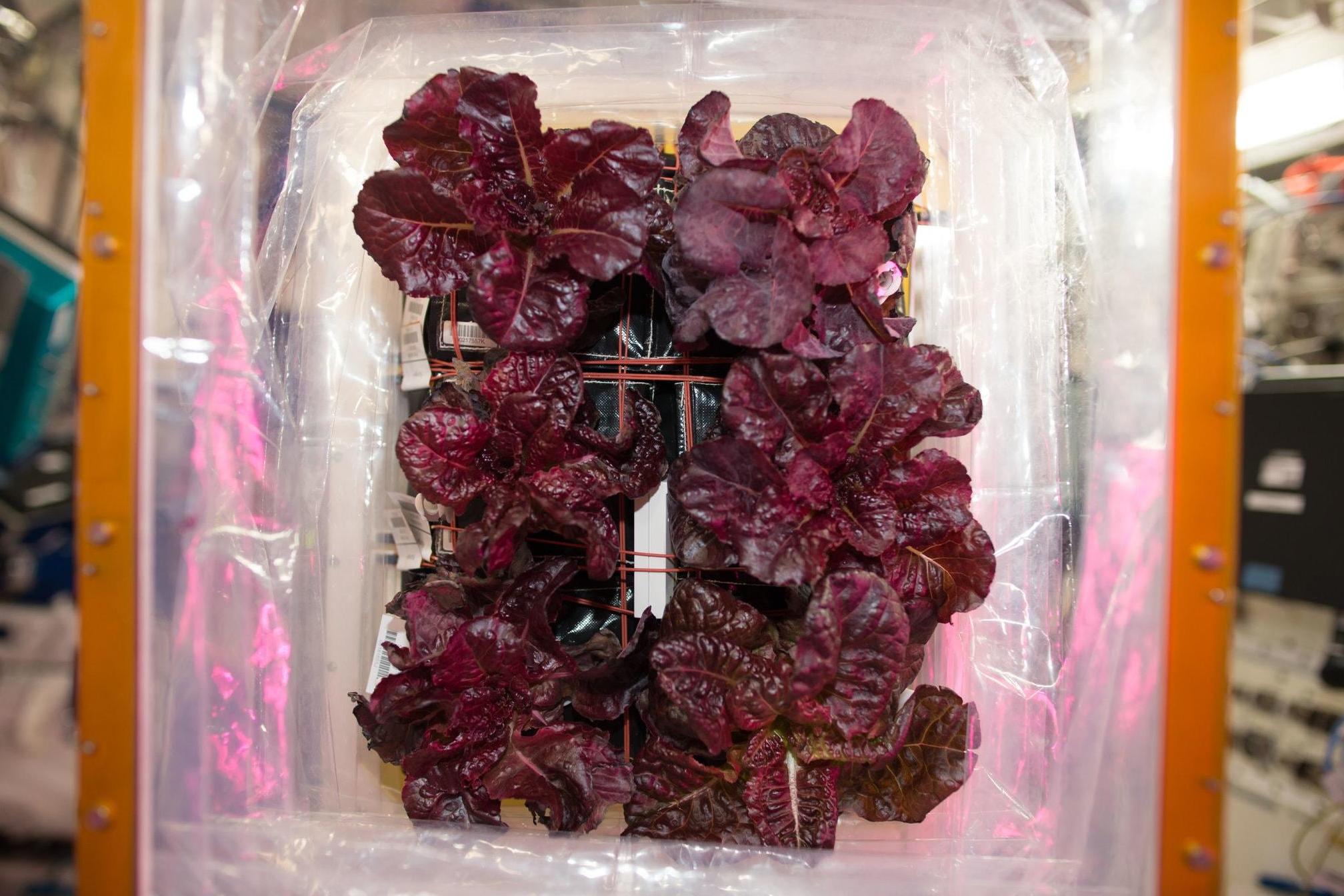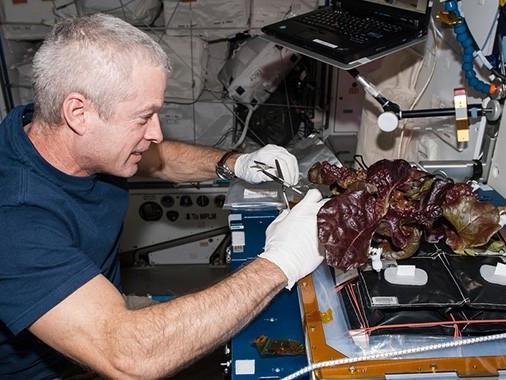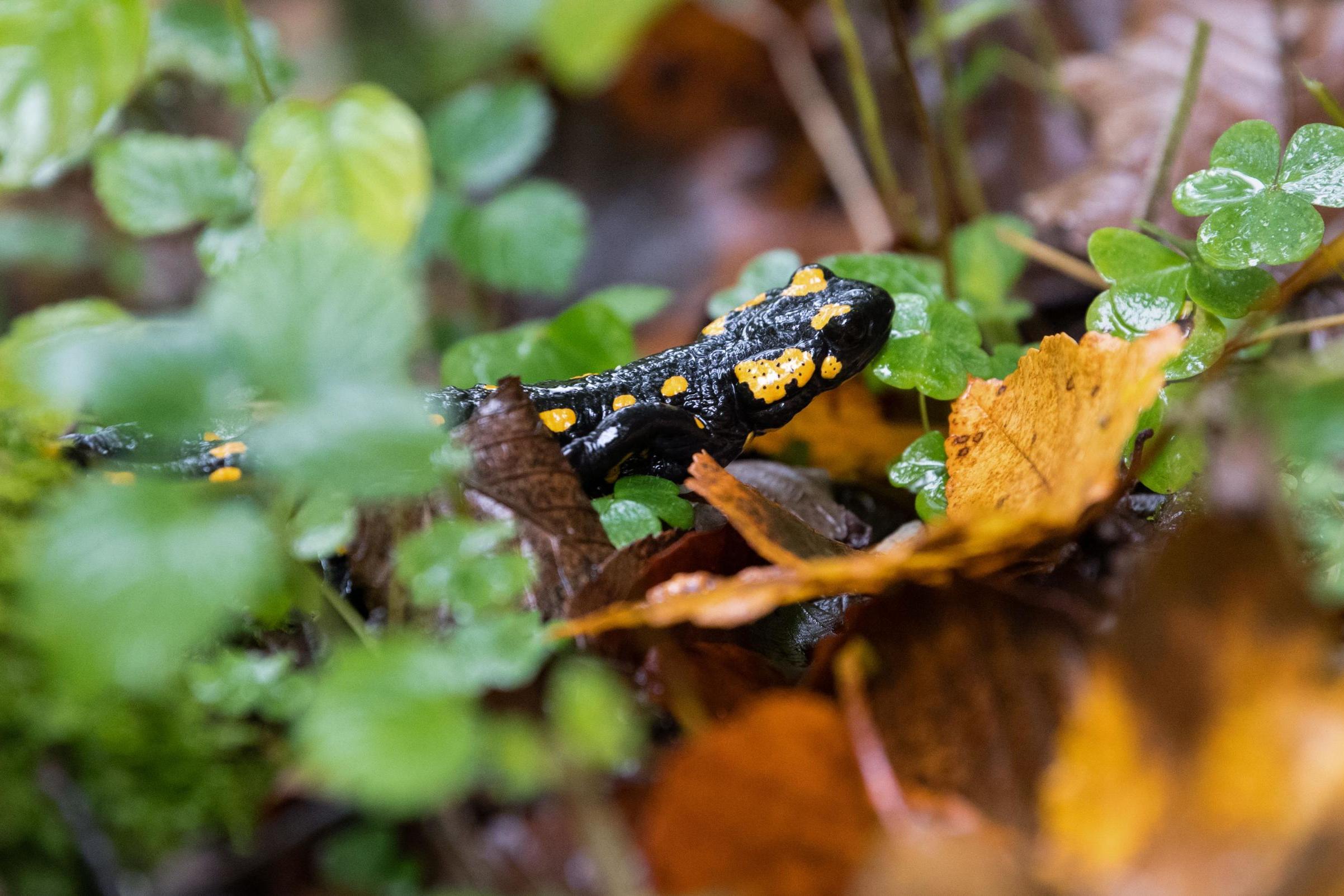Science news in brief: From space lettuce to ancient plant networks
And other news from around the world

Your support helps us to tell the story
From reproductive rights to climate change to Big Tech, The Independent is on the ground when the story is developing. Whether it's investigating the financials of Elon Musk's pro-Trump PAC or producing our latest documentary, 'The A Word', which shines a light on the American women fighting for reproductive rights, we know how important it is to parse out the facts from the messaging.
At such a critical moment in US history, we need reporters on the ground. Your donation allows us to keep sending journalists to speak to both sides of the story.
The Independent is trusted by Americans across the entire political spectrum. And unlike many other quality news outlets, we choose not to lock Americans out of our reporting and analysis with paywalls. We believe quality journalism should be available to everyone, paid for by those who can afford it.
Your support makes all the difference.Red space lettuce might feed red planet astronauts
When astronauts head for Mars, perhaps sometime in the 2030s, there is a good chance that they will be growing their own vegetables to eat along the way.
In research recently published, scientists are reporting that lettuce grown in space is safe to eat and as nutritious as that grown on Earth.
“This was really good,” says Gioia D Massa, a plant scientist at Nasa’s Kennedy Space Centre in Florida and an author of a paper that appeared in the journal Frontiers in Plant Science. “There wasn’t anything completely surprising or crazy or weird.”
At present, most of the food that astronauts eat at the International Space Station is prepared on Earth and sent up in packets. Deliveries of fresh produce arrive on cargo rockets, allowing the crew to enjoy some salad.
But for a longer, more distant mission to Mars, which might last three years, that would not be possible. Indeed, food and other supplies might be sent ahead of time, meaning the meals might be sitting around for five years before the astronauts eat them.
“It’s going to be old by the end of that mission,” says Grace L Douglas, lead scientist for advanced food technology at Nasa’s Johnson Space Centre in Houston.
By that time, some of the nutrients and taste will most likely have decayed. And if astronauts do not enjoy what they are eating, they may eat less, potentially setting off a cascade of negative health consequences including loss of weight and muscle and damage to the cardiovascular system.

The space agency is trying to develop processed foods that last longer, as well as methods for efficiently growing crops in a weightless environment. If that requires too much work, it would not be an effective use of an astronaut’s time.
“You want them out exploring,” Douglas says, “and not worrying about their next meal.”
This parasite doesn’t need oxygen to survive
“Mitochondria are the powerhouses of the cell.” Repeated incessantly in high school biology textbooks, this slogan reminds students that these organelles, found in the cells of humans, plants, fungi and myriad other organisms, fuel vast swaths of biology, making use of abundant oxygen.
But researchers in the Proceedings of the National Academy of Sciences report that a tiny parasitic cousin of jellyfish, which under a microscope looks something like the head of an archetypal bigheaded and dark-eyed alien, is bucking the trend: It has no mitochondria, suggesting it does not use oxygen for respiration. It appears to get its energy from some other source that remains mysterious.
Mitochondria, which are likely remnants of bacteria that took up residence in larger cells, have their own small genomes, separate from the genetic warehouse of the organism they are a part of. The researchers were hoping to compare the mitochondrial genomes in two species of these parasites, says Dorothee Huchon, a molecular geneticist at Tel Aviv University and an author of the new study. But when they looked at their data, they saw no sign of one in Henneguya salminicola, a parasite that lives inside the muscles of salmon and other fish.
This is not the first time researchers have found creatures that have ditched their mitochondria. Giardia, a parasite that causes gut troubles in people, and Trichomonas vaginalis, a parasite that drives the sexually transmitted infection trichomoniasis, have just a vestige of the original organelle, a sac that does not perform the traditional energy-producing role. It does do other things for the parasites but energy production is shifted to another set of enzymes.
What H salminicola might be using instead to power itself is not clear, however, Huchon says. It does not have the same setup as Giardia and T vaginalis. But the researchers think that the absence of a functioning mitochondrion might be linked to the peculiar environment where the parasite lives – fish muscle.
“Our hypothesis is that this parasite is also in an oxygen-poor environment,” she says. “It’s in the muscle – it’s known that fish muscle is extremely poor in oxygen.”
The missing mitochondrial genome has opened up many questions for the group, Huchon says. It’s a reminder that though we tend to think of creatures gaining new functions rather than abandoning old ones, that is far from the reality.
“Evolution can go in strange directions,” she says.
Salamanders and frogs hide a glowing secret

Amphibians are half landlubbers, half water babies. They breathe through skin that is moist, warty, crested and in some cases, poisonous or hallucinogenic. Some wear dull, leaflike-camo patterns. Others sport Guy Fieri flames.
And as cute, gross, pretty, ugly, magical and witchy-named as these slip-sliding creatures may be, they’ve been hiding something in a secret, fluorescent world invisible to humans. Many amphibians, whether salamanders, frogs or their distant cousins – possibly all of them – glow, according to a survey published in Scientific Reports.
“There is still a lot out there that we don’t know,” says Jennifer Lamb, a biologist who conducted the research with Matt Davis, both at St Cloud State University in Minnesota.
The study paves the way for new research into how or why amphibians possess this special adaptation, which has potential applications in medical technology and conservation.
Science has documented many biofluorescent animals including chameleons, corals, jellyfish, reef fish, sharks, scorpions, butterflies, budgies, parrots, penguins, puffins, sea turtles and even flying squirrels. But scientists have focused more on aquatic animals, and when testing terrestrial animals, mainly used UV light (like in the sun). But in some patches of forest and freshwater habitats where amphibians live, blue light can dominate just as it does in deep water. Could this be why so few amphibians were known to fluoresce?
To find out, the St Cloud team grabbed a blue-light flashlight and cast it on salamanders they were already studying.
As they watched those babies glow green through filtered lenses, they wondered: How many other amphibians would also ignite?
They schlepped their tools from the lab to the field as well as Chicago’s Shedd Aquarium.
They tested animals from eight of 10 families of salamanders, five families of frogs and one family of caecilians, a type of limbless amphibian you might mistake for a worm or snake.
Every animal tested, even larvae, lit up in varying patterns and intensities. Spots, blotches, stripes, snotty secretions, urine and even bones and digits glowed after exposure to blue light. For most species this glow was bright green, but some produced yellow or orange fluorescence.
That distantly related species of amphibians all fluoresced suggests that the trait likely developed early in amphibian evolution and may be quite widespread among the group. But what causes it and what purpose it serves remains a mystery.
Sunspots and stranded whales: A bizarre correlation

As an astronomer at Chicago’s Adler Planetarium, Lucianne Walkowicz usually has to stretch to connect the peculiarities of space physics with things that people experience on Earth.
Then came the email about whales.
Sonke Johnsen, a biologist at Duke University, told Walkowicz that his team had stumbled upon a bizarre correlation: When the surface of the sun was pocked with dark sunspots, an indicator of solar storms, grey whales and other cetacean species seemed more likely to strand themselves on beaches. The team just needed an astronomer’s help wrangling the data.
“This was like a dream request,” Walkowicz says. “And I finally got to do something in marine biology, even though I didn’t study it.”
With that assistance, there is some evidence of this peculiar correlation, the researchers say in a paper published in Current Biology.
“The study convinced me there is a relationship between solar activity and whale strandings,” says Kenneth Lohmann, a biologist at the University of North Carolina who did not participate in the research.
This coincidence across 93 million miles of space is more plausible than it might seem. Sunspots are a harbinger of heightened solar weather, marking times when the tangled plasma of the sun’s atmosphere coughs out more photons and charged particles than usual. These disturbances sail outward and smash into our planet’s magnetic field, creating colourful light shows like the aurora borealis and sometimes disrupting communications.
Biologists have already demonstrated that many animals can navigate by somehow sensing Earth’s magnetic field lines. Grey whales, which migrate over 10,000 miles a year through a featureless expanse of blue, might be relying on a similar hidden sense. But unlike a migrating bird, a whale is not easily placed in a magnetised box for controlled experiments.
Instead, Jesse Granger, a Duke graduate student, looked at whale strandings, which previous studies had suggested seemed to track with sunspot activity. She narrowed a list of grey whale strandings kept by the National Oceanic and Atmospheric Administration, to highlight the percentage of whales that were stranded alive, as well as whales that were released back to sea and seemed to recover. In theory, those cases were examples of healthy whales that had merely taken a wrong turn.
Sunspot activity waxes and wanes, oscillating over an 11-year period. These strandings followed the same pattern. “They showed the exact same cycle as the sunspots,” Granger says.
The networks that ruled Earth’s ancient seas
More than half a billion years ago, peculiar beings called rangeomorphs ruled the seas. They looked like modern ferns, with leaflike protrusions that branched off in a fractal pattern. Some stood more than 3 feet tall, while others lay flat.
Scientists don’t know why rangeomorphs emerged 571 million years ago – before the Cambrian explosion filled Earth’s oceans with more familiar creatures, and when nearly all of their fellow organisms were microscopic – or how they ate or reproduced. We also don’t know how they fit into evolutionary history. There are “many strange questions about them,” says Alex Liu, a paleobiologist at the University of Cambridge who has been studying the frondy oddballs for 13 years.
New research by Liu and Frankie Dunn of the Oxford University Museum of Natural History adds another surprise: Although rangeomorphs were thought to have lived on their own, many were actually connected by long, thin filaments, forming large networks.
The authors hope that this discovery, published in Current Biology, will help shed light on some of those other mysteries.
In 2015, Emily Mitchell, a paleoecologist at Cambridge, along with Liu and other researchers, analysed hundreds of digitised specimens of a flat rangeomorph species called Fractofusus, all from Newfoundland, Canada. Fractofusus lived in groups, and through statistical analysis the researchers found that they were often laid out in “this clustered pattern,” Liu says.
“You had one large individual, and much smaller individuals surrounding it in a cluster. Each of those was surrounded in turn by a cluster of even smaller individuals.”
Based on this arrangement, the researchers posited that Fractofusus might have reproduced by sending out stolons, or runners: filaments that grow a certain distance from the parent organism and then bud new life.
After a few years, they had found thousands more examples in Newfoundland, including a handful in which the filaments connected two rangeomorphs to one another. Through further analysis, the team found that the filaments tended to emanate from the bases of the rangeomorphs. The biggest filaments were about 12ft long – “quite a lot larger than anything we were expecting,” Liu says
It isn’t clear that these filaments were actually used for reproduction – or, indeed, exactly what they did, says Lidya Tarhan, an assistant professor of geology and geophysics at Yale University who was not involved with the study. But “the association is certainly highly suggestive,” she says.
© The New York Times
Join our commenting forum
Join thought-provoking conversations, follow other Independent readers and see their replies
Comments